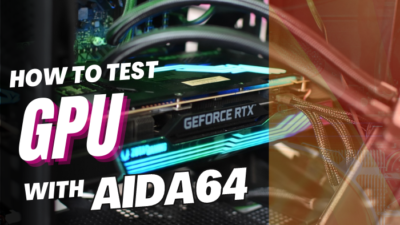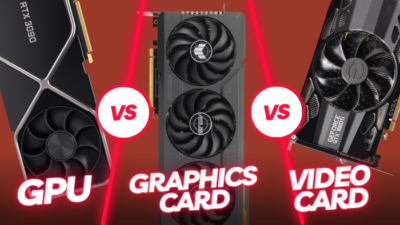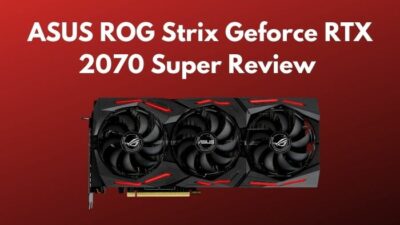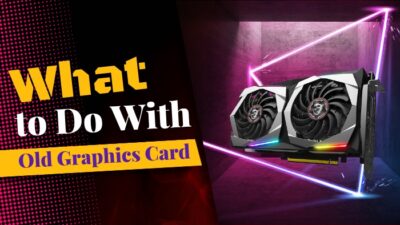Whether you want to fit a 2K display resolution into a 1080p monitor or an FHD game resolution into a QHD monitor, GPU & Display Scaling is the only tool to rely on.
In my case, I needed to run my tad-old GPU output into a 21:9 Aspect Ratio based 4K wide monitor. And my graphics card doesn’t have WQHD resolution support, leaving my 144Hz monitor running at 30Hz.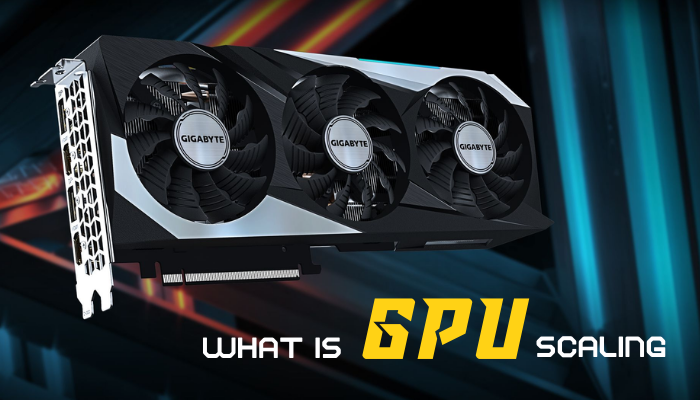
Let me share my experience and how I overcame it with the help of the GPU scaling function.
What is GPU Scaling & How Does It Work?
If I say briefly, the GPU Scaling stretches a non-native GPU resolution to fit into your Monitor. Such a statement isn’t sufficient to understand precisely, requiring more explanation and technical terminologies.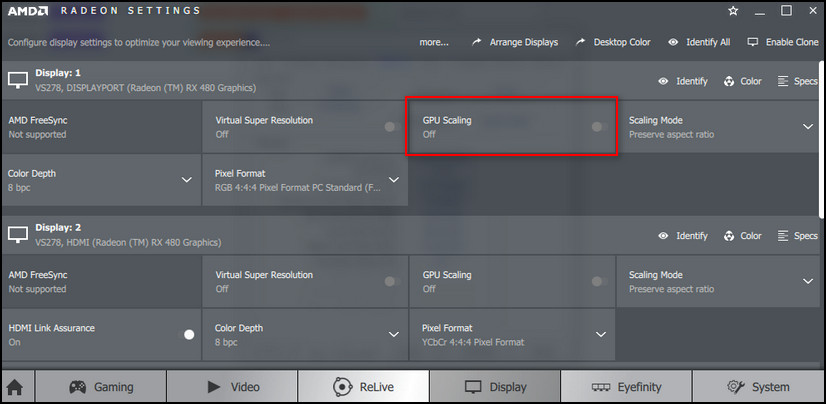
Therefore, you must consider some terms and relevant know-how before I start explaining GPU Scaling in detail.
First, we’ll discuss various Resolutions, EDID, Input lag, Adaptive Sync, and Display Scaling.
As we all know, every display has a particular amount of Resolution Adaptive compatibility. Similarly, GPUs are different based on some specific Resolution Output capacity.
Although some standard Resolution presets like HD, FHD, QHD, WQHD, 4K UHD, and 8K UHD, monitors with unfamiliar Aspect Ratios need additional support from a GPU by creating Custom Resolution. Those Custom Resolutions remain excluded from EDID, which is merely justifiable as a list of display resolution presets.
Furthermore, the Input Lag is the time delay a monitor needs to show images continuously coming from the GPU. The input lag is estimated in ms (milliseconds), affecting FPS while gaming.
Lastly, Adaptive Sync is essential for the gaming experience. You’ll face ghosting effects, Frame-Rate fluctuation, blurry views, and more troubles, if the display resolution can’t synchronize with the GPU output resolution, leading to the topic of Display scaling and GPU Scaling at the end.
Check out the easiest way to fix GPU Sag.
Now, What is GPU Scaling actually & how does it work?
The GPU Scaling can compress a higher resolution GPU output onto a lower native resolution monitor to show a richer view. Alternatively, lower-resolution output from GPU remains sharp and considerable on higher-resolution displays to achieve extra FPS from GPU.
As a result, the Input latency increases if your GPU isn’t powerful enough to handle more FPS required to deliver. Also, the monitor plays a vital role here by adopting those extra FPS, only if the monitor firmware is capable of adopting the required resolution.
Here comes the matter of Display Scaling, which is an OS-based setting for immense texts, apps, and menus if your monitor is bigger plus high-res. Regarding the fact that everything might look slightly pixelated or blurry.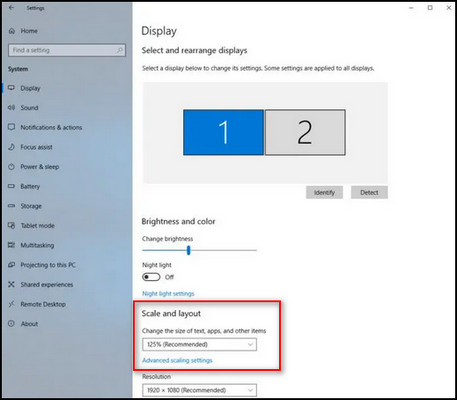
Then which is better, GPU Scaling or Display / Monitor Scaling?
The fundamental difference is resolution and its sharpness. While Display Scaling is regulated to make options and texts more accessible, GPU Scaling is especially used to upscale the image quality.
For example, I wanted to stretch an HD (720p) output into an FHD(1080p) monitor without losing the sharpness and clearness of Valorant Game. Either way, I had to compress 4K into my FHD display to achieve a richer view.
However, GPU scaling does not apply to every monitor display, enabling it and tweakings are primarily doable if you have a dedicated GPU. The following section might help you learn how to enable & tweak GPU scaling.
How to Enable GPU Scaling on Both AMD & Nvidia?
Both AMD & Nvidia have GPU Scaling support under different names. You can easily enable and grab advantage of it if your monitor has G Sync or Freesync support. But you must enable the Adaptive sync feature from the specific games to make it work.
Here are the step-by-step processes to enable GPU scaling on AMD & Nvidia:
AMD
Seemingly, the GPU scaling feature is the name that came from AMD drivers. The Adrenaline software from AMD made this process less difficult & accessible.
Here are the steps to enable GPU Scaling in the AMD Radeon Software:
- Search AMD Radeon Software using Windows Search Box.
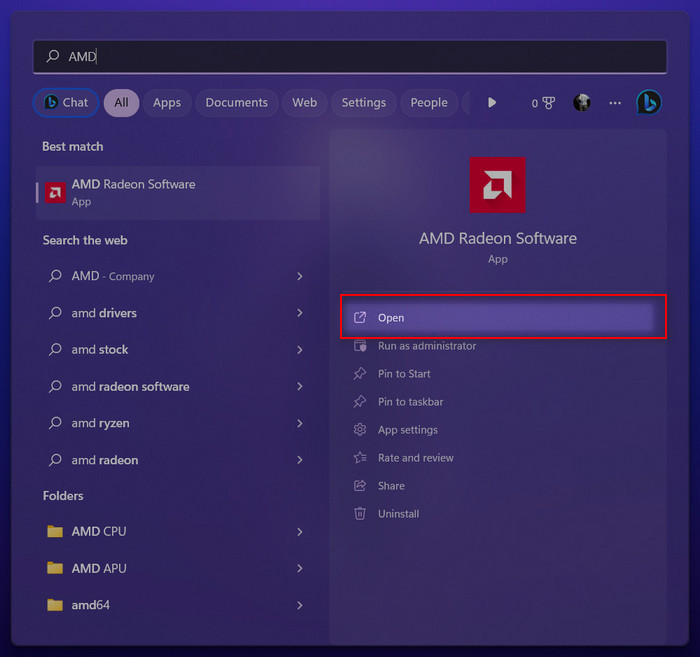
- Launch it and navigate to the Display Tab.
- Enable GPU Scaling from the list.
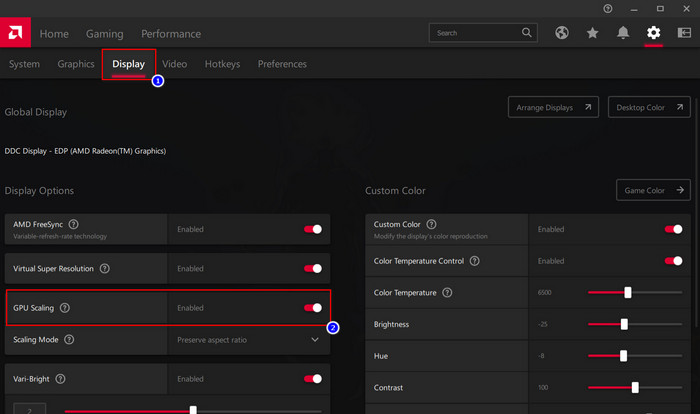
- Select Scaling Mode from the drop-down menu.
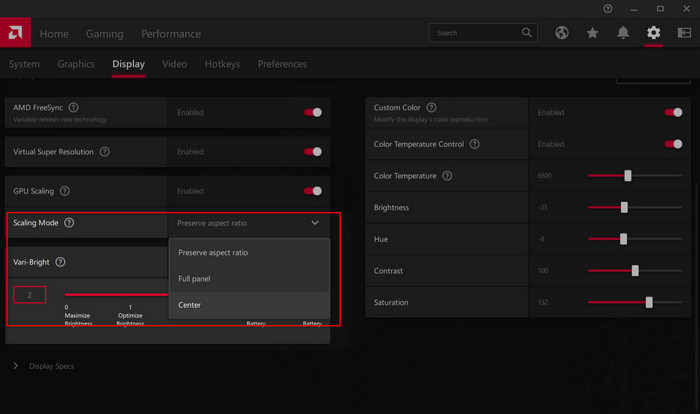
These simple steps might help you adjust GPU Scaling in AMD’s control panel settings called Adrenaline software.
Follow our guide to fix GPU Artifacting.
Nvidia
Nvidia also has the GPU Scaling feature under the hood of 3D Management, making it less accessible than AMD. But the GPU Scaling on Nvidia cards has better tweaking options and is rich in quality.
Here are the steps to enable GPU Scaling in Nvidia Control Panel:
- Search for Nvidia Control Panel with Windows Search Bar.
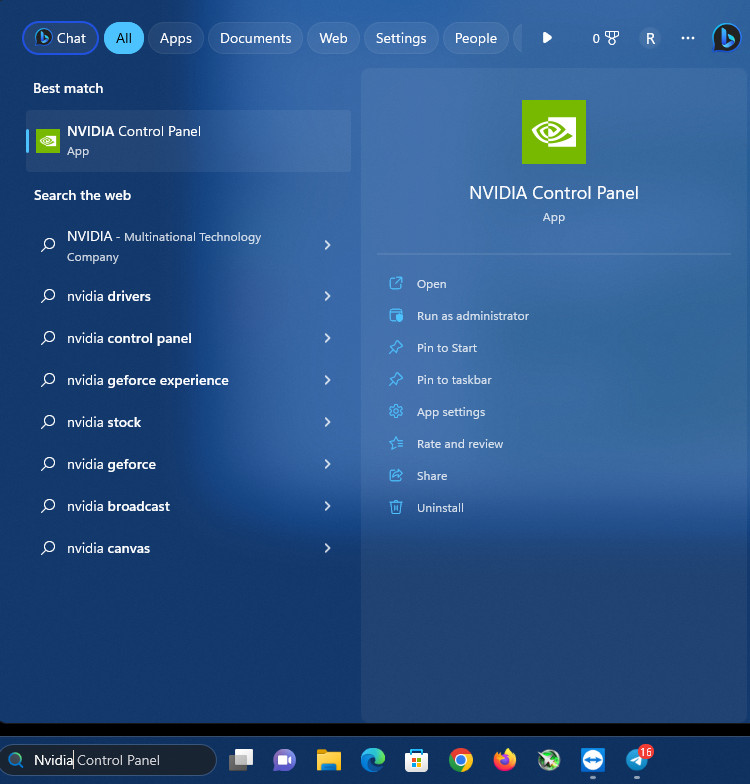
- Click on Adjust setting with preview Under 3D settings.
- Select Use the Advanced 3D settings.
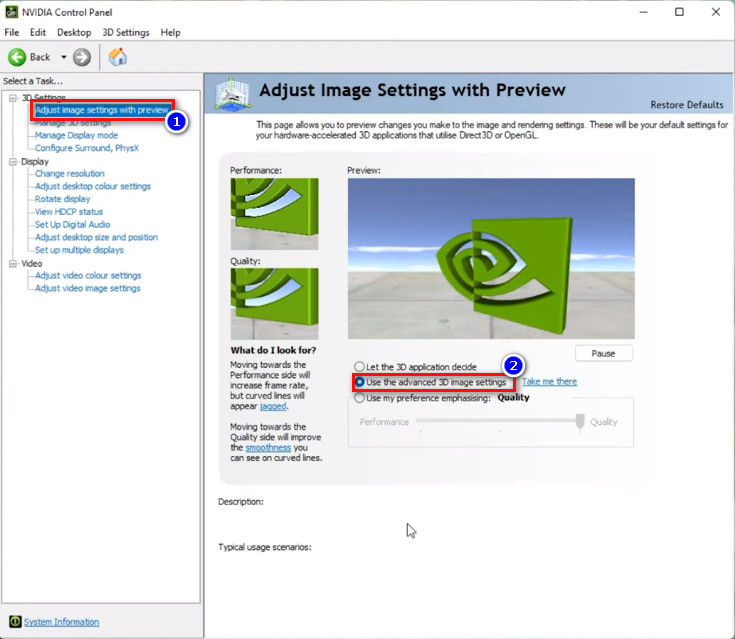
- Click on Manage 3D settings.
- Expand the Image Scaling and toggle On.
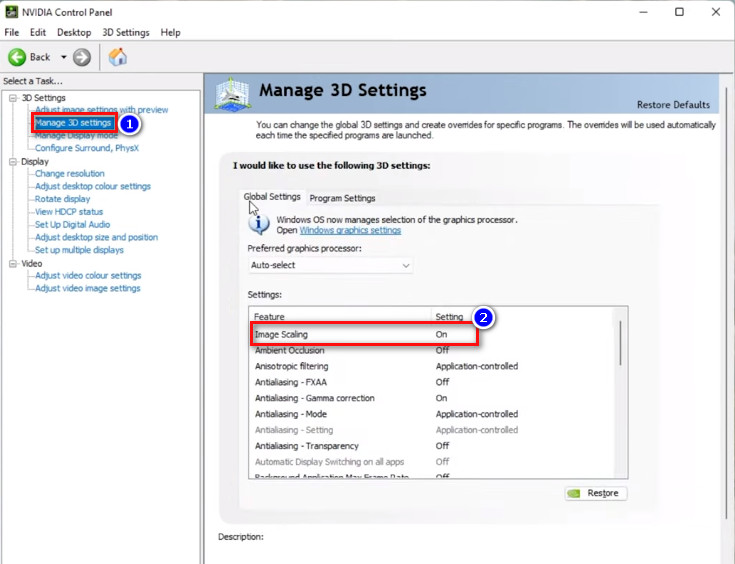
- Set Sharpness from 20-35% according to your need.
- Check the box Overlay Indicator.
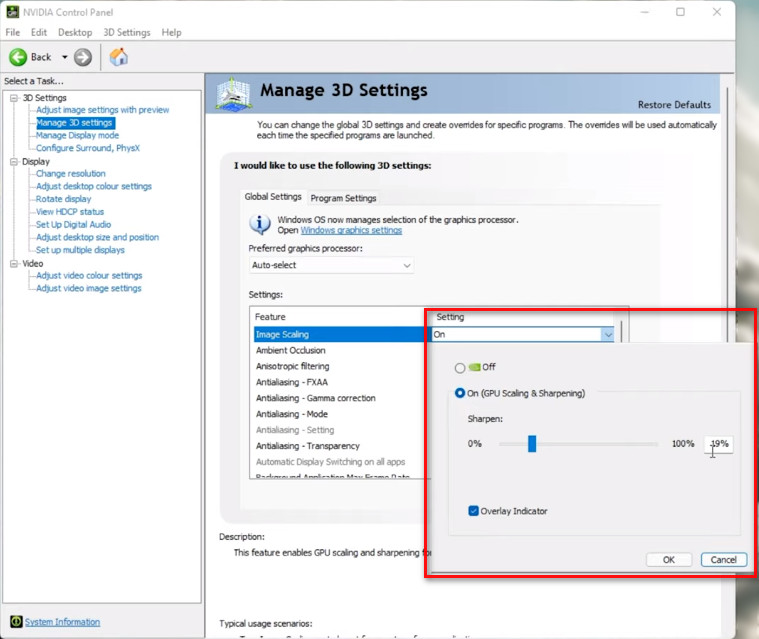
- Launch Geforce Experience. By searching in Windows Search.
- Click on the General tab from the list-left.
- Toggle the Image Scaling option.
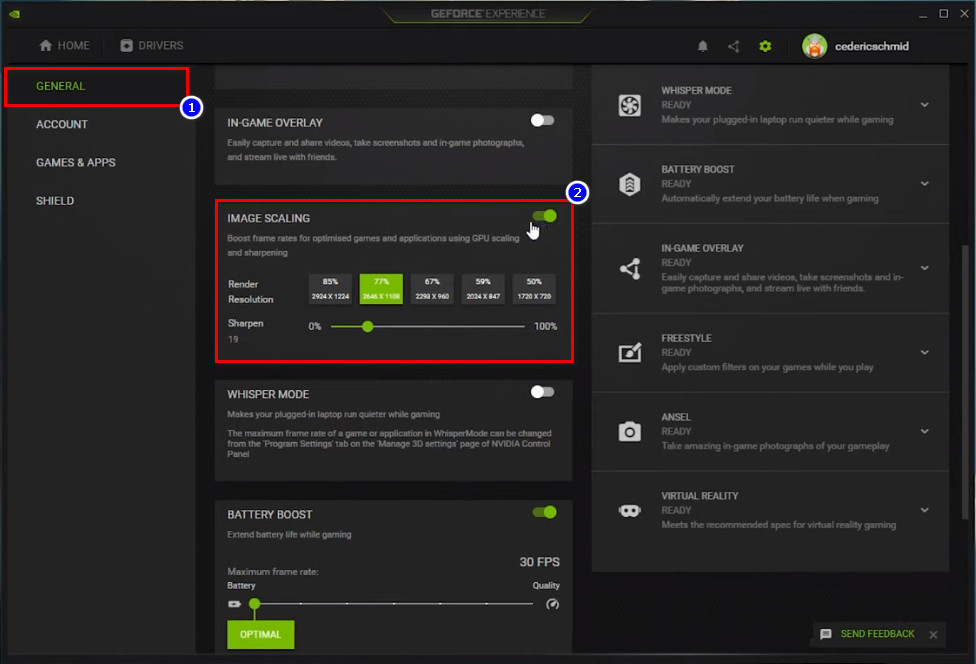
- Set Render Resolution as you prefer.
Here are the steps you can easily turn on the GPU scaling in the Nvidia Control Panel & Geforce Experience.
You need to read our separate post about does GPU Artifacting mean Defective.
Does GPU Scaling Boost Gaming FPS?
Unfortunately, it doesn’t increase or boost FPS while gaming, because every frame/image GPU has to push to display, needs to be stretched vertically & horizontally, creating extra labor on the graphics card.
Therefore, it may affect your gaming FPS due to input lag if your GPU isn’t powerful enough to handle it. Then what is the use case?
The goal is to increase the image quality of the games that don’t support the native resolution of your system. Take the Fallout Game as an example, being a game of the old period, it doesn’t have the support for a QHD monitor. To get a sharp and considerable view in your native monitor resolution, you’d need GPU Scaling turned on.
Another example of recent games is some games don’t have the support for WQHD monitors, which I have had a bitter experience of. The stretched view is so unusual that I paused playing games until I bought a GPU that supports GPU scaling.
So, you see when and why GPU Scaling is necessary. Although GPU scaling can’t increase the FPS of your game, you might consider this feature for retro gaming or DeSmuMe games.
Read more on can a brand new GPU Artifacting?
FAQs
What increases FPS in GPU?
Some attributes like VRAM, GPU Architecture, compatibility, and overall system matching can increase FPS with a perfectly tweaked system.
Does RTX give better FPS?
RTX has Ray-Tracing feature support on many different games and those games look much better even on a slightly lower resolution.
Does RTX reduce lag?
Reflex is a Technology announced by Nvidia while releasing the 3000 series, offering less input lag between devices & gaming monitors to give better gaming FPS.
Does VSync help FPS?
Unfortunately, VSync limits your FPS according to our monitor’s capability instead of increasing it to avoid screen tearing & ghosting.
Final Verdict
All the features offered by GPU manufacturers may not serve every user well, but a feature like GPU Scaling does have the potential for specific circumstances. I always recommend learning about features before turning them on in your system.
Thus, you may turn your system acting up as you turned a setting on without knowing its effects.
For more such information, follow us and remember to drop a comment as you should find this article informative.

